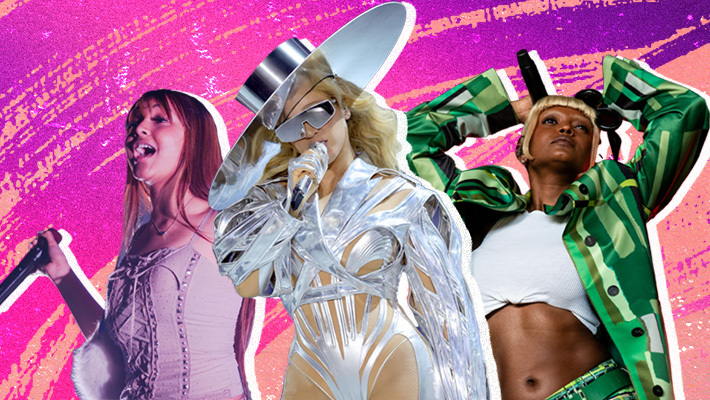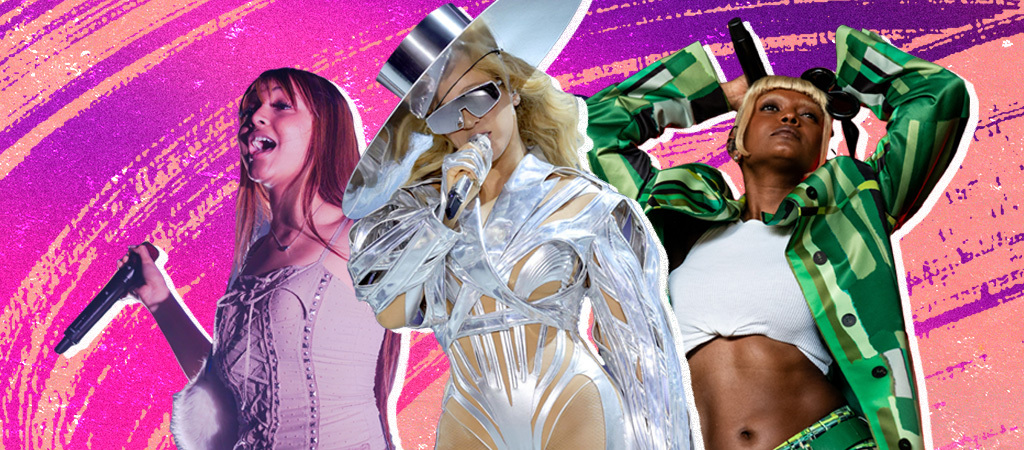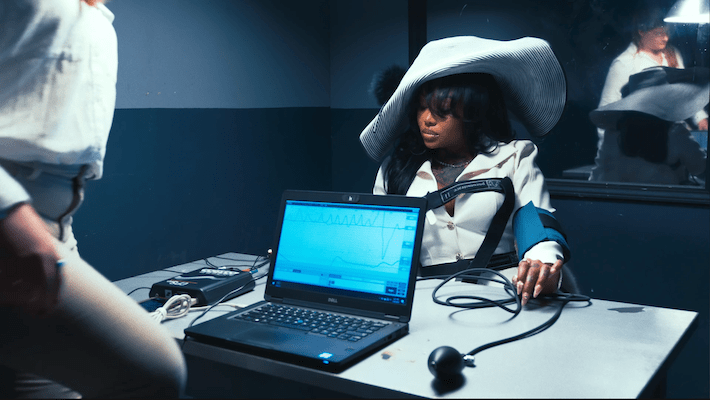
Modern Black femme artists are reveling in the spoils of dance music reentering the mainstream, not that it hasn’t been here all along. Staking claim to 1990s house music were vocalists Caron Wheeler, Robin S., Cece Peniston, and Crystal Waters, who often melded gospel tones with club-oriented production. Janet Jackson ruled the dancefloor with energetic choreography, disruptive sounds bespoke to her album-to-album evolution, and lyrics that prioritized her largely queer fanbase. Over time, Black women have seen the futurities of a genre that they shaped and, rightfully, continue to shift.
Breaking new ground for underrepresented dance communities was Beyoncé’s seventh album, Renaissance, which made the music icon the first Black woman to win a Grammy Award for Best Dance/Electronic Album. The masterpiece was Beyoncé’s first dalliance with an album concept of escapism, heard throughout its pulsating, 16-track rush. Post-Renaissance, the dance phenomenon has been ongoing, with Black women bringing the underground to the mainstream field on a grand scale.
The movement will only go further as artificial intelligence, techy aesthetics, counterculture parties and the return of true remix albums take the forefront. Renaissance was just the reintroduction, and perhaps a reawakening, for audiences to sit up and take notice of the contemporary Black female artists who’ve been on the dance music moodboard for years.
Perhaps matriarchal of the progressive Black dance culture resurgence, Kelela envisions an underground nirvana that underrepresented and queer communities can thrive in. Introduced to some as an alt-R&B vocalist who had not one but two guest features on Solange’s 2013 Saint Heron compilation, the D.C. native took shape on her cutting-edge debut mixtape, Cut 4 Me, released just one month before.
Kelela kept pushing creativity within her Warp Records collection, whether brief but potent (Hallucinogen), sexily haunting (Take Me Apart), or a masterclass in nightclub liveliness and comedowns (Raven). On the first anniversary of Raven, the LP got a remix edition, Rave:n, the Remixes, a pastiche to Take Me a_Part, the Remixes, because it isn’t a Kelela album rollout without her highlighting top-notch producers. Leading the new dance frontier with seductive vocals and sounds that bend subgenres, Kelela adventurously forms new worlds.
The music of pop and alt-R&B heroine Tinashe became enshrouded in dance-forward grooves after her 2019 split from RCA Records. Although the singer released three albums with the label, including her 2014 debut Aquarius, which featured the smash “2 On,” Tinashe had creative differences with RCA, along with inadequate promotion. Freed from depending on major label support, 2019 marked the year of reinvention for Tinashe, who channeled her early 2010s mixtape run on her first independent album, Songs for You.
The release was a salve from the choppy rollouts of Tinashe’s prior three albums, as she directly reintroduced the vibes to her fanbase, whom she affectionately calls ‘SweeTees.’ Songs like “Stormy Weather,” “Save Room for Us,” “Die a Little Bit” and “Perfect Crime” leaned on candied dance-pop and electronic, making it a hint towards the preternatural and psychedelic 2021 album 333 and the experimental LP BB/Ang3l, which dropped last year.
Embracing the latest technology – Tinashe used VR headsets in her 333 launch – and maintaining a highly-choreographed aesthetic, she recently brought viewers into her visual album and virtual performance, The BB/Angel Experience. Featured on the rapid new single “Zoom” with electronic/IDM producer Machinedrum, Tinashe’s just getting restarted, and we’re all bearing witness to her infallible ride through the dance space.
Dallas-born and raised artist Liv.e expands her radical take on R&B into hints of electronic and drum and bass on her sophomore album, Girl in the Half Pearl. From neo-soul roots (some liken her style to Erykah Badu, pioneer of the subgenre), Liv.e went from Bandcamp beginnings into groundbreaking status, with GITHP teetering between twitchy ballads and unconventional post-breakup cure-alls.
The LP was an aperture to its own electronic remixed version, GITHPREMIXEDITION, entirely produced by fellow Dallas native Ben Hixon, with Liv.e being tapped as a feature on Kelela’s Rave:n, the Remixes. Putting her own spin on dance, Liv.e makes listeners agog to hear what world she’ll bring us into next.
Overseas, noteworthy Black female artists in the UK are making a statement in dance music, essentially, due to the genre connecting to British audiences at the turn of the ‘90s. Nearly three decades later, we’ve met international sensation PinkPantheress, who found her footing on TikTok, where she hybridized garage, drum and bass, and syrupy hyperpop. Racking up fandom for her loosies on the social media platform offered PinkPantheress worldwide recognition. While she topped the charts with Ice Spice (“Boy’s a Liar Pt. 2”), she hasn’t compromised her energetic and quirky appeal.
Deconstructed club, alt-pop, and grime darling Shygirl opened the doors to Club Shy, her latest EP, where the South Londoner brought the masses into her saucily warped universe. Months before Shygirl unveiled the project, she caught the attention of Beyoncé, who gave her a spot as an opener on a London stop of the Renaissance World Tour. Apart from her Tinashe-assisted single “Heaven,” Shygirl was also on Rave:n, the Remixes, laying claim to the JD. Reid remix of “Holier,” where she traded rhapsodic notes with Kelela.
Skilled junglist, music producer, DJ, and vocalist Nia Archives touches upon drum and bass, and dancehall in her fearless works. She deejayed and freely danced alongside Jorja Smith last year when she dropped her since-viral take on Smith’s “Little Things,” and she’s kept us partying for the last five years. Since giving us a masterclass on breakbeats and global flair on EPs Headz Gone West, Forbidden Feelingz, and Sunrise Bang Ur Head Against Tha Wall, she’ll explore deeper dance terrain on her debut album Silence Is Loud, due next month.
Black women in all scopes of dance music — we’d be remiss not to mention amapiano, industrial, and Jersey club — are elevating it past its outdated boundaries. Motion in the wide-ranging genre will persist as long as we welcome diverse perspectives because the rise in Black femme-forward dance isn’t a reclamation; the space has always been ours.


